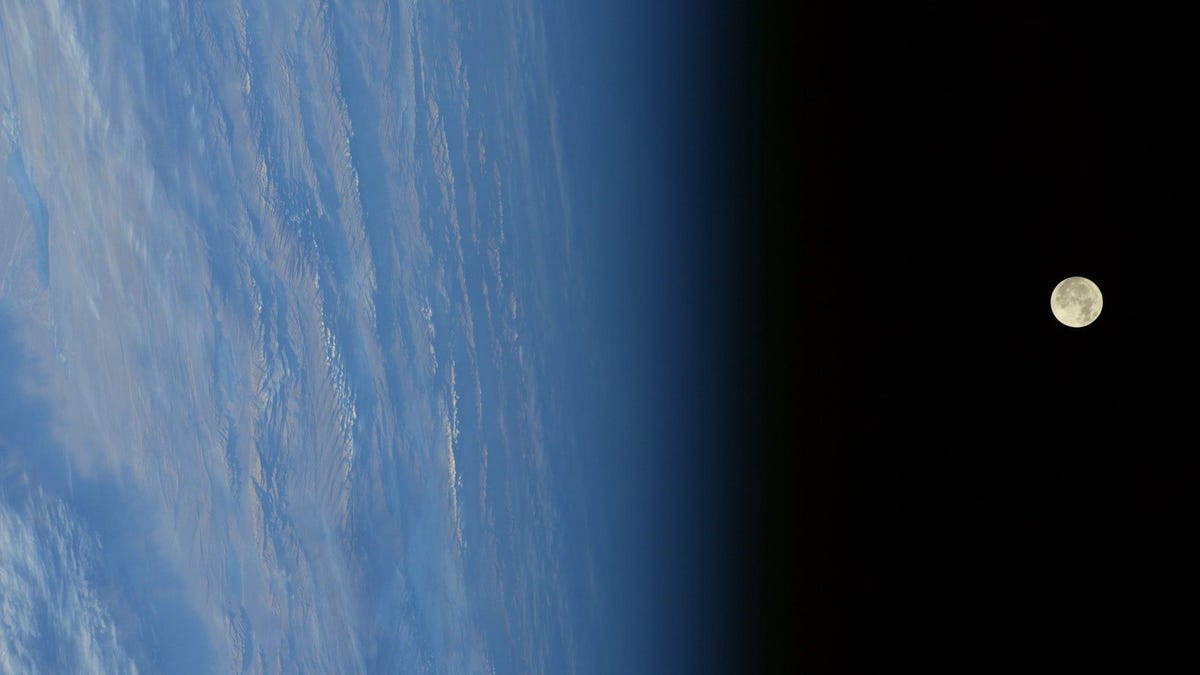The sun sets faster today as the 'super worm equinox moon' rises
Scientists call it a "perigee syzygy," writers like to call it a "supermoon," but the rest of us just call it an awesome sight.

NASA astronaut Randy Bresnik shared his view of the Dec. 3, 2017, supermoon from the space station. Mongolia hides beneath an ethereal cloud cover.
The third and final supermoon of 2019 rises Wednesday evening, which also happens to correspond with the first equinox of the year.
Because the sun will set almost exactly due west Wednesday, it'll slip below the horizon line at its steepest angle of the year, making it disappear a bit quicker. This is convenient because the super-sized moon rises in the east around the same time the sun goes down in the west. Awfully nice of that bright star to get off the stage and focus on lighting up a much smaller celestial body during its big moment.
What makes the moon special March 20 is that it'll be both full and at its closest point to Earth along its orbital path, known to astronomers as perigee syzygy. Consequently, scientists prefer to call this a perigee moon instead of a supermoon, a term with origins in astrology rather than astronomy.
In North America, the traditional name for a full moon in March is the "worm moon," because the month often brings warmer temperatures that allow all sorts of annelids to start wriggling about a little more.
This last supermoon of the most recent series, which also gave us a "super blood wolf moon" (perigee syzygy with a total lunar eclipse in January) and a "super snow moon" in February, falls within hours of an equinox. In the Northern Hemisphere we think of the March equinox as ushering in spring, while it heralds the beginning of autumn south of the equator.
So bring together the worlds of astronomy, astrology and folklore and you get a "super worm equinox moon."
What all this means for the casual skywatcher is that on Wednesday, the moon may appear up to 14 percent larger than a normal full moon. To really get a good look at the superness of the moon, you'll want to catch it as close as possible to moonrise/sunset.
If the weather or life doesn't cooperate where you are, you can also watch a livestream of the event via the Virtual Telescope Project embed from Rome, above.
If you miss it, you'll have to wait until February 2020 for the next supermoon.
As always, if you catch any particularly spectacular views of the super sight, please share them with me on Twitter @EricCMack.
Originally published March 11, 1:39 p.m. PT.
Updates, March 18: Adds livestream and a few updated details; March 20: Adds details about sunset speed.

